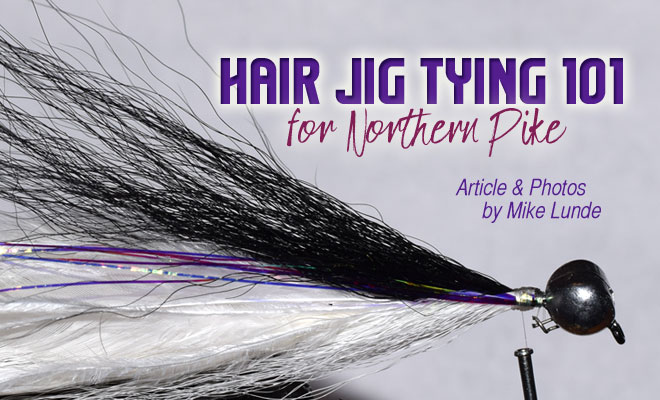 Article by Mike Lunde
Article by Mike Lunde
Northern pike are one of the dominant predators that roam the endless freshwater highways and lake systems across the state of Alaska. Both underneath the shadowy depths and embedded in the shoreline vegetation, northern pike are biologically blessed with one of most abundant prey sources on the food menu. Northern pike exhibit preferences for common pelagic foragefishes—least and Bering ciscoes, round and humpback whitefish, and longnose suckers—that forage exclusively on phytoplankton, zooplankton, fish species-specific eggs and detritus. Additional prey items northern pike occasionally forage on are terrestrial animals, particularly large rodents and smaller waterfowl.
Given the aggressive, violent foraging behavior of northern pike, we present multiple methods to tie up your own custom hair jigs. Since the debut of hair jigs to northern pike and other freshwater gamefish back in the late 1990s, they have reclaimed the throne as one of the most productive lures to employ in your pike arsenal. When fishing pressured pike waters in interior Alaska or the invasive systems in Southcentral, hair jigs are often underutilized.
Most pike anglers generally rely on traditional standbys—spoons, spinnerbaits and jointed minnowbaits or crankbaits—to target pike populations statewide. As well as these lures work in remote and roadside systems, it is typically the underexplored fishing methods that result in the most or largest trophy-sized northern pike caught. Therefore, we are going to explore innovative, creative methods to custome-create your own hair jigs so that you can implement an additional fun-thrilled technique to your pike fishing arsenal.
In this complimentary online article, you will find the necessary steps outlined to tie the following hair jigs for pike: a creature jig (standard and articulated model), bucktail hair jig, and a Gamechanger jig (multi-articulated jig).
CREATURE JIG
It is well known that mouse patterns popularized the thrill of topwater fishing statewide. Fly fishermen across the state of Alaska skated mouse patterns and other similar sized critter offerings on long, moderate to deep runs with excellent success. After understanding the importance of the predatory-prey interaction between fish and four-legged rodents, I wanted to transcend the idea of mouse flies towards the development of a jig-based model that conventional anglers could enjoy with similar producing results.
With no clear-cut name for these particular patterns, I nicknamed them “creature jigs” because they basically represent a struggling rodent or small mammal in the water struggling to swim either on the surface or subsurface of the water column. Two strategies were developed to simulate a creature jig—a simplified model on a jig head and an articulated model that formulated supersized versions. In addition to the lure’s design, materials to be incorporated into the design were simple as well, so tying time could be kept to be a minimum. An added bonus when using fly-tying materials for constructing jig patterns are that waterlogged materials such as rabbit strips often are characterized by additional weight due to water absorption. This is not a problem when designing various profiles of jigs because they are simply being casted and presented with lightweight spinning or baitcasting setups.
One of the simplest materials to use in the construction of a creature jig is rabbit strips. A tail is formed simply by selecting a rabbit zonker strip, stripping the majority of hair off the hide, and leaving minimal hair near the end of the tail. This technique creates a common tail found on mice, shrews, rats and small muskrats. The tail is tied on the back section of the jig hook. A cross-cut rabbit strip is then selected and tied in the same region where the tail was secured. After the cross-cut strip is palmered forward to form the main body, the creature jig is complete. Additional final steps to compliment the design can be implemented. Whiskers can be formed with multiple strands of monofilament or thin-diameter floss. Doll eyes can be superglued on each side of the body to give the realistic impression of a face.
Tying Steps for a Creature Jig
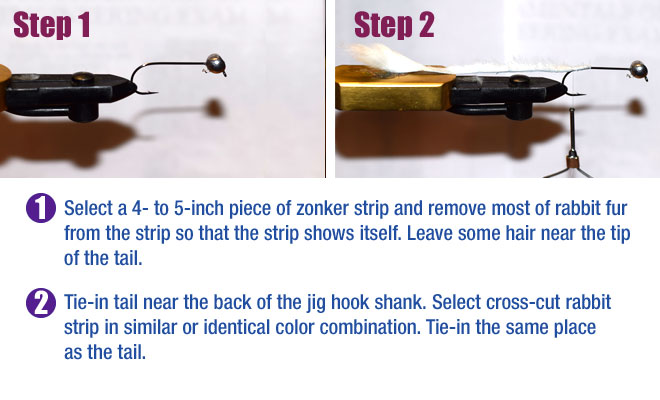
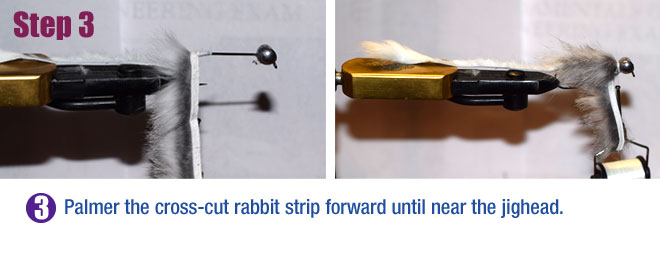
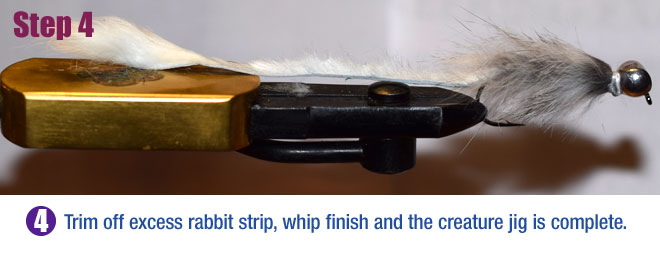 Articulated Version
Articulated Version
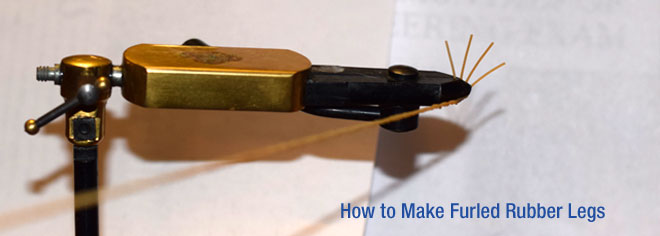
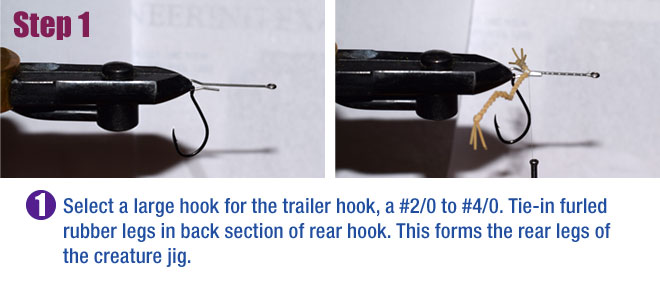
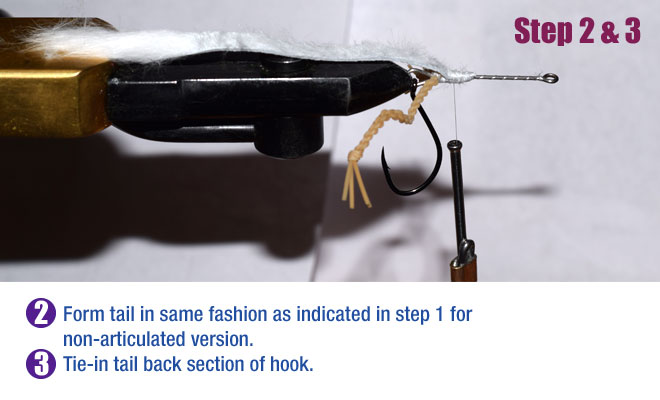
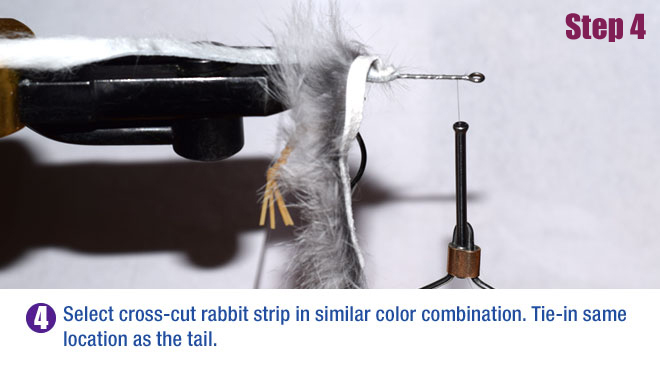
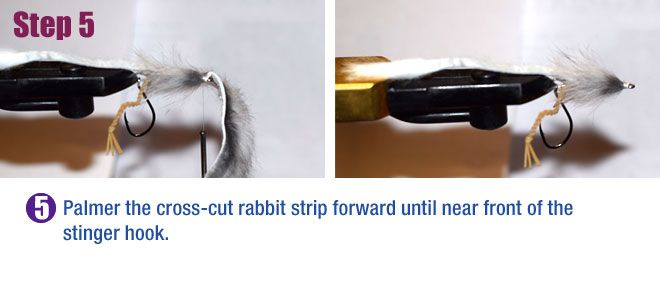
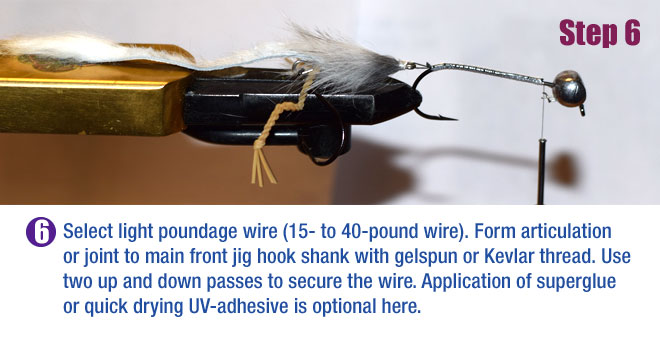
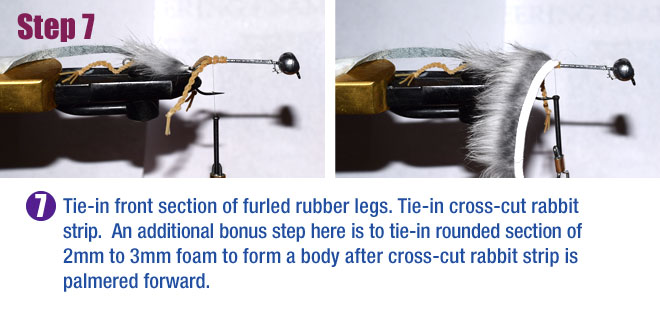
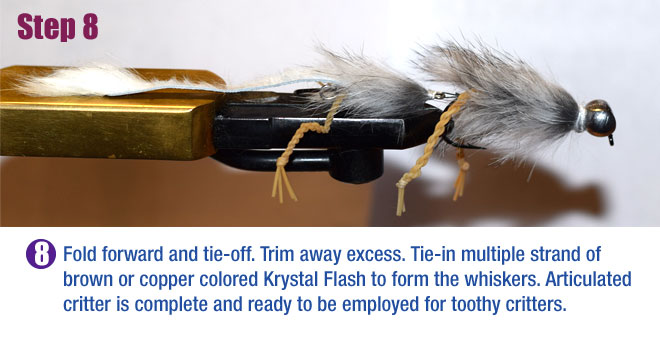 BUCKTAIL DECEIVER JIG
BUCKTAIL DECEIVER JIG
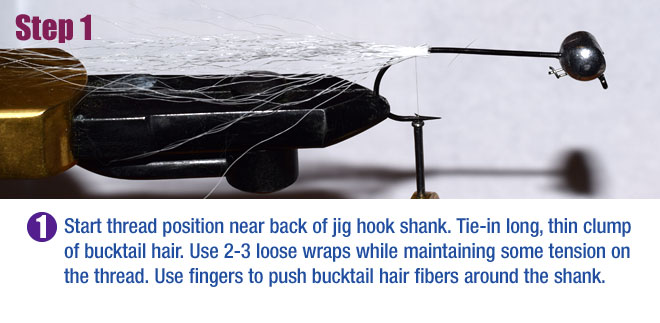
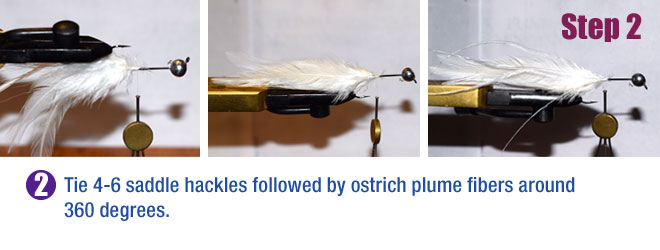
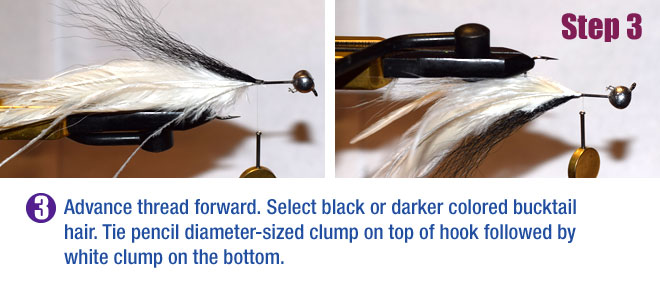
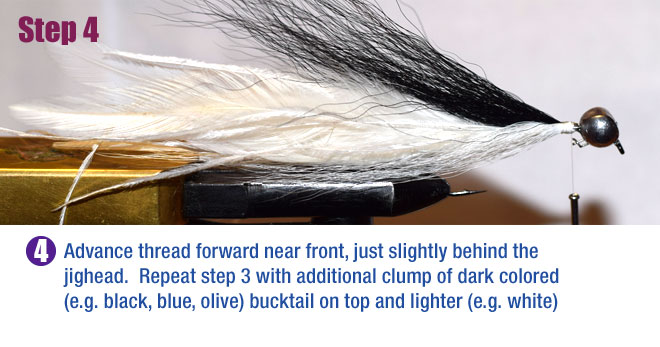
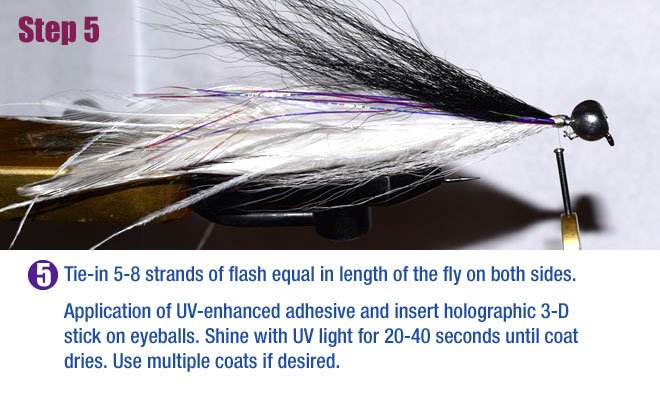 Articulated Deceiver Jig
Articulated Deceiver Jig
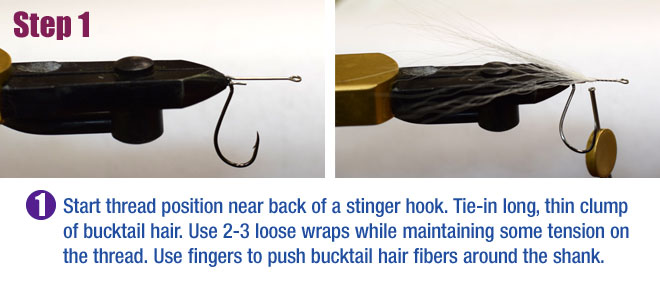
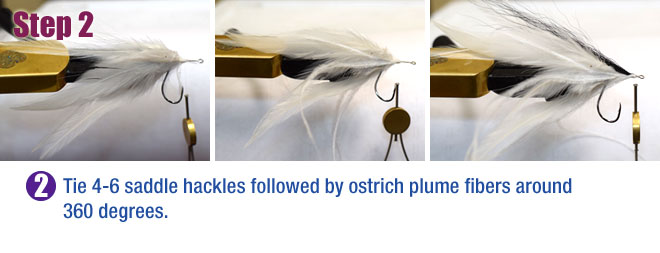
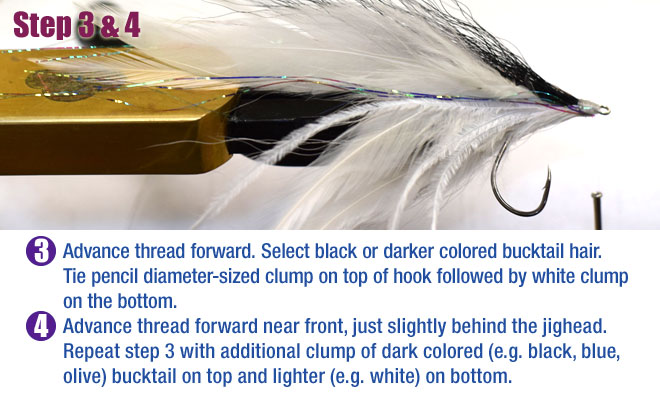
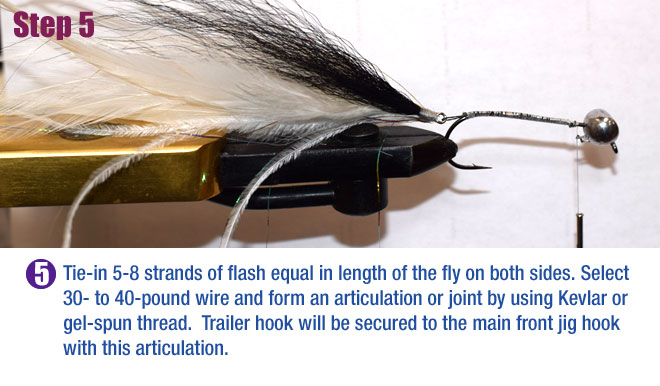
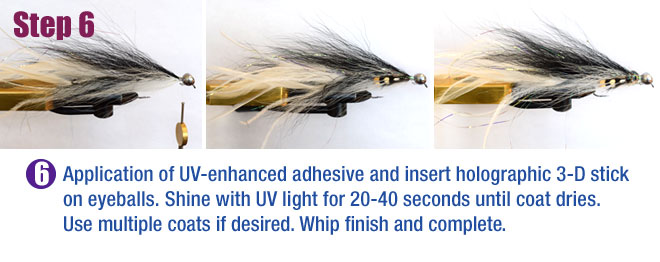 Multi-articulated Model
Multi-articulated Model
- Repeat all the tying steps as indicated above for the standard and baseline articulate model. Use Waddington shanks of various sizes to make a multi-articulated model.
GAMECHANGER MODEL
Multi-articulated jigs offer similar movements as multi-articulated flies do when stripped or swung on a broadside presentation. After the recent explosion over the Gamechanger series of flies, a multi-articulated design originally implemented by Blane Chocklett on the East Coast, fly fishermen could not resist at how deadly this series of streamers were at enticing predatory gamefish to strike. After the discovery of this multi-articulated system, I implemented some exploratory tying sessions with the Gamechanger system and used an alternative jig head design instead of a front sacrificial or non-sacrificial front hook as used with the streamer system. Material selection is rather endless with this tying system, but the simplest materials to use on a Gamechanger jig are either cross-cut rabbit strips or bucktail tied on each fish spine or Waddington shank. It is best recommended to use the same sized fish spine in each region of the jig or gradually increase the length of each section so there is a gradual taper as you advance forward towards the main jighook.
Anatomy of the Gamechanger
A Gamechanger streamer or jig system consists of multiple articulations of corresponding lengths. As with any established fly or jig design system, specific formulas are designed to allow for maximum enhancement and performance of the jig during the jigging presentation. Chocklett originally implemented a set formula with four articulations consisting of three 25mm fish spines connected to a main front hook. On most baitfish patterns, Chocklett regarded the size #2/0 as the ideal all-around hook of choice. When the 5-sectioned fly was finally complete, the overall length was 5 inches. If modifications are necessary to achieve a longer length for the fly, a mixed composition of shank sizes can be incorporated into formula. There is one added bonus about using the Gamechange sytem on a jig head. While fly fishermen are restricted to lightweight materials, waterlogged materials (e.g. rabbit and other natural furs as prime examples) can be used since the streamer is being converted into a jighead design to be casted on spinning or baitcasting setups.
Tying Steps for Gamechanger Jig
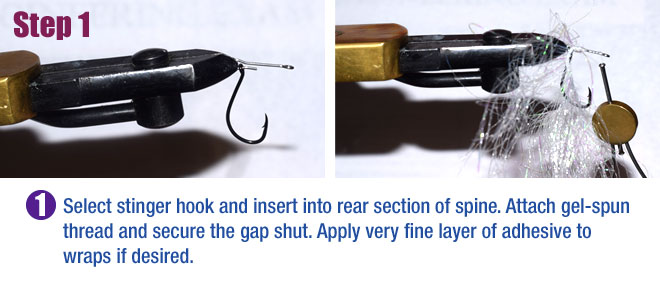
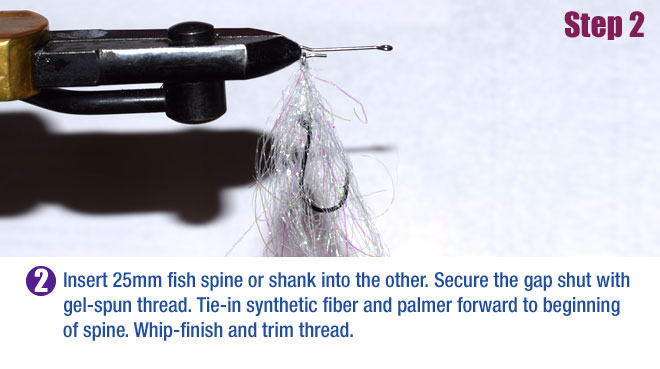
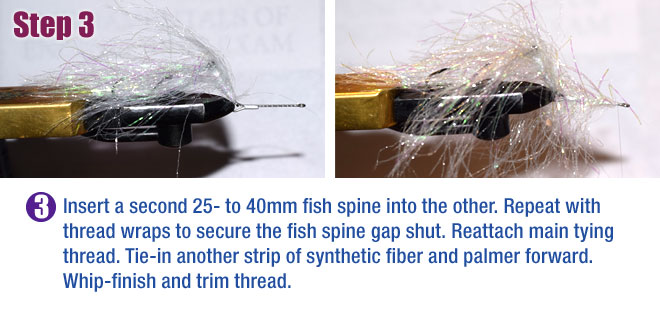
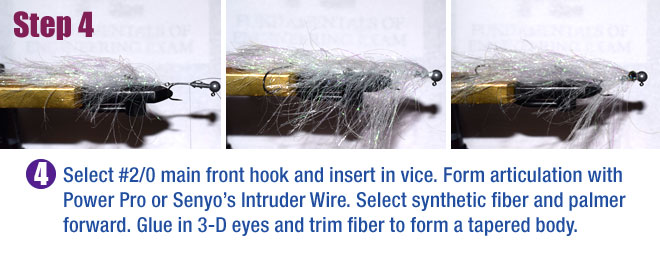 Tying note: Finished jig depending on hook size should range from 4.5- to 5 inches. Longer length models can be incorporated, which is dependent on the baitfish species you are representing. Use longer fish spines or Waddingtons if wanting to achieve a longer length for the hair jig.
Tying note: Finished jig depending on hook size should range from 4.5- to 5 inches. Longer length models can be incorporated, which is dependent on the baitfish species you are representing. Use longer fish spines or Waddingtons if wanting to achieve a longer length for the hair jig.
After tying, there is a final option: Leave the flashy profile as is for a bulked up profile or progressively trim each section into a tapered body.
TYING STEPS FOR GAMECHANGER BUCKTAIL DECEIVER JIG
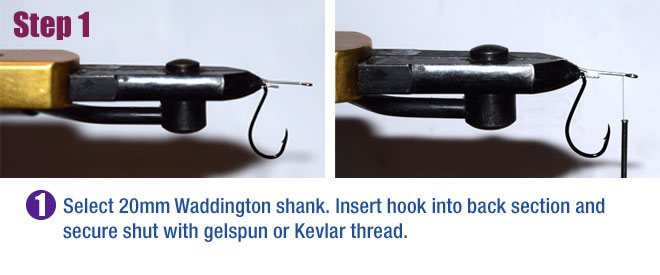
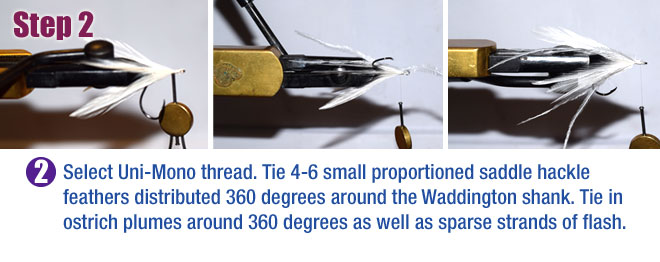
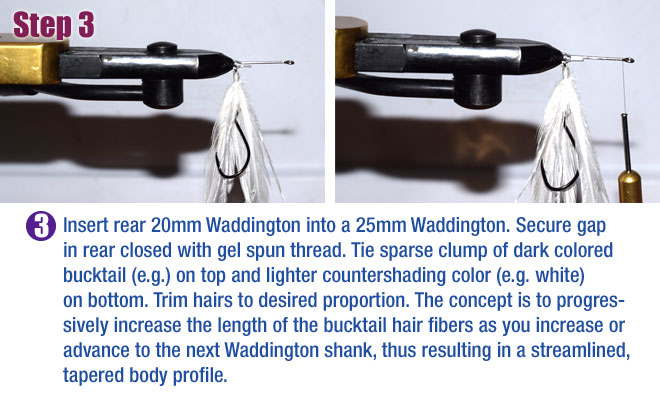
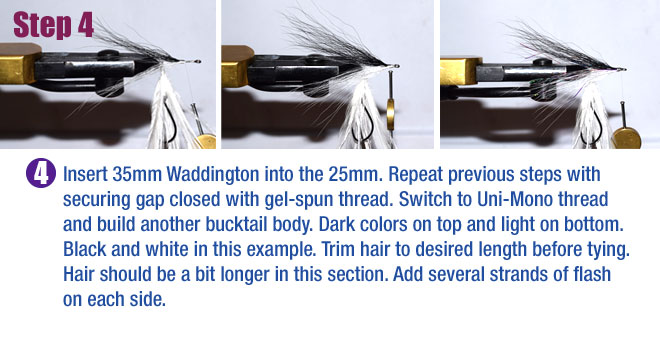
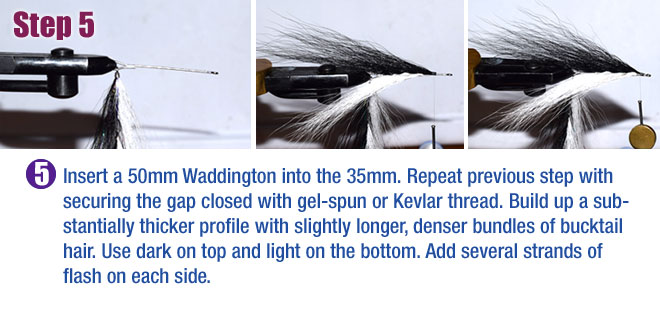
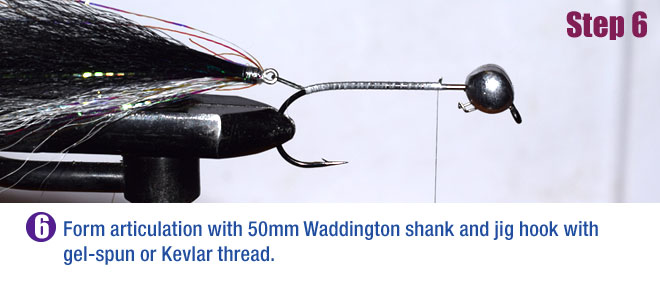
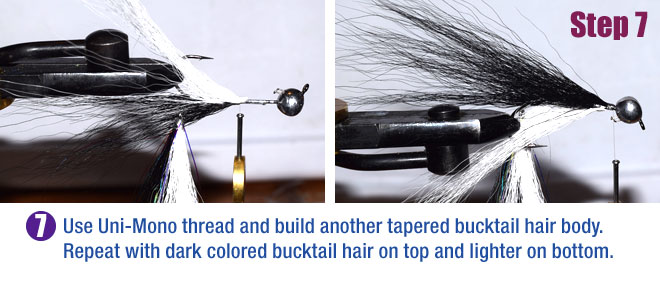
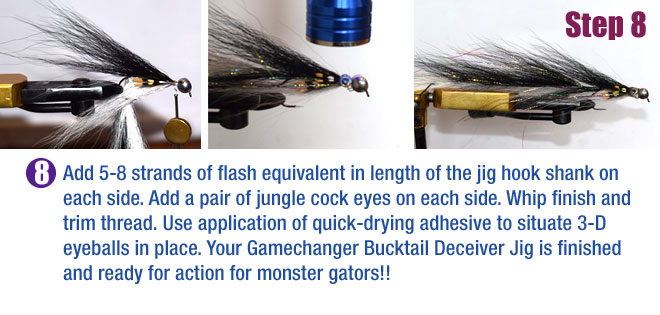
 Note: This jig can be tied as small as 5 inches and as long as 12 to 14 inches depending on the numbers of Waddington shanks used.
Note: This jig can be tied as small as 5 inches and as long as 12 to 14 inches depending on the numbers of Waddington shanks used.
